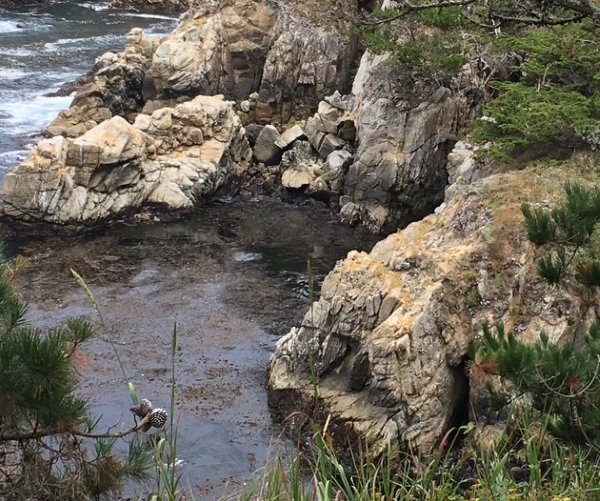Four thousand years before Joshua Cowell walked over the Sierra from Nevada’s Carson Valley in 1862 and decided the sandy plains found near the southeast edge of the Delta would be the perfect place to buy land and farm, there were people living in the area we now call Manteca.
Archeologists employing carbon dating to determine the age of buried artifacts determined the first long term settlers in the region were the Yokut tribe of indigenous Americans.
Native to what is now present-day Central California that includes the Manteca-Lathrop-Ripon area as well as the rest of San Joaquin County, plus Stanislaus County. The overall territory they inhabited was from the Delta south to Bakersfield and into the Sierra including what today is referenced as Yosemite National Park.
Experts in the 20th century estimated the Yokut population in 1770 numbered as low as 17,000 to as high as 70,000. There were as many as 60 tribes that spoke several related languages. They were divided into sub-regions referenced today as the Foothill Yokuts, Northern Valley Yokuts, and Southern Valley Yokuts.
The area was a virtual smorgasbord of edible vegetation and wildlife up until Western Civilization started transforming the region spurred on by the California Gold Rush.
The snowmelt unchecked by dams and not contained by levees would overwhelm rivers and streams in the spring often forcing them to spread out for miles. The spring runoff spurred a repertoire of moisture long plants such as cattails, hyacinths, and tule that would turn golden brown by the time deep summer hit. The landscape was laden with mink, otter, raccoons, beavers and other fur-bearing mammals.
It is what brought the Hudson Bay Company to the southern terminus of the California-Oregon Trail used by French trappers to establish French Camp in 1832, San Joaquin County’s oldest settlement. The trappers were able to spend 13 years collecting pelts for shipment back to the East Coast and Europe.
The Yokuts built their villages as close to the river as possible seeking out high ground and spots where rivers could be crossed.
The Yokuts were gatherers and hunters. That meant their villages were also built near where they could harvest nature’s bounty. The valley offered berry bushes, wild grapevines, as well as grasses of which some were edible. Up until perhaps 160 years ago large herds of tule elks, deer, and antelope roamed the valley along with grizzly bears, rabbits, coyotes, badgers, and other small mammals.
Water fowl such as geese and ducks were said to be so thick that when in flight to and from marshes the skies darkened.
Like many area residents today, once summer hit they headed to the high Sierra. But instead of seeking rest and relaxation they camped there to live off wild strawberries, edible roots, various other berries, horse chestnuts, and pine nuts as well as to collect medicinal herbs and soap plants.
And just like today, the local Yokut economy was bolstered by travel to the Bay Area. But instead of paychecks they brought home clams, abalone, and other shells from Coastal Indians that they primarily traded furs to obtain. The trade route was over the Altamont Pass via Livermore.
The shells were used by the Yokuts as their form of money.
Although the exact extent of the Yokut population in the region is hard for researchers to determine, it wasn’t unusual for tribes to number 2,000 members.
The Yokuts were part of the balance of nature for thousands of years until the settlement of California spurred by the Gold Rush deprived them of their ancestral hunting and fishing grounds. Not only were they displaced from their lands but they were often killed when they resisted. On top of that, they proved especially susceptible to diseases carried by white people.
By 1970, the number of Yokuts in San Joaquin County had dwindled down to 363. Today nationally there are about 2,000 Yokuts enrolled in the federally recognized tribe.
Arguably, the most famous Yokut in terms of how members of various tribes are depicted in history, is Chief Estanislao who was born in 1798 along the banks of the Rio de Laquisimes (now known as the Stanislaus River) with the Yokuts name Cucunuchi. The river at the time carried a name conferred onto it by the Miwok. It was at one point in 1806 christened Rio de Nuestra Senora de Guadalupe or the River of Our Lady of Guadalupe by the Spanish expedition led by Gabriel Moraga.
Records at the Mission San Jose indicated mission padres visited the area near where Ripon is today in 1821. They convinced Cucunuchi to travel to the mission for a formal Christian education.
It was at the Mission San Jose that he was baptized “Estanislao” (Spanish for Stanislaus that is a Latin word for someone who achieves glory or fame) after his arrival at Mission San José.
Juan Bojorques in his 1887 history of California describes Estanislao as “about six feet tall, his skin was more white than bronze, he was very muscular like a horse”.
In the 1876 publication “History of California” Juan Bautista Alvarado noted “Estanislao was able to read and write and stood out among the leaders of other Central California Indian tribes”.
The young Estanislao didn’t like what the invaders were doing to his people so he created a resistance and encouraged others to flee back to the Central Valley.
Estanislao left the mission in 1827 leading 400 followers.
The group raided missions in San Jose, Santa Clara, and Santa Cruz. They also raided Mexican settlements along the present day Stanislaus River. This didn’t set too well with the Spanish since the resistance included returning the favor of disrupting ways of life by stealing cattle, guns, and horses from missions and ranches.
Estanislao taught those who joined him battle techniques he had learned from Spanish and Mexican soldiers. These techniques, including trenches, palisades, and an early form of guerilla warfare were essential to initial success on the battlefield. His raids were characterized as sudden, usually involving a trap, and ending with no loss of life, and he would sometimes use his sword to carve his initial, authenticating his handiwork.
Estanislao and others ended up near present-day Ripon where he named the river they found there. While Estanislao acted out of concern that the Yokuts and others were being exploited, the Spanish believed they had to be taught a lesson. So in 1829 some 40 men departed the Presidio at San Francisco to engage Estanislao and his men. Even with a swivel gun mounted on a boat, the Spanish were defeated. Two months later General Mariano Vallejo returned with not just reinforcements but the willingness to burn the Yokuts out. As a result the soldiers killed Yokuts as they fled to the water to get away from the flames. Estanislao was among the few that escaped.
Later Estanislao repented, was forgiven by mission priests in 1829, and became a staunch friend of Captain Charles Weber of Stockton.
Estanislao returned to the Mission San Jose on August 24, 1834. He prospered there while teaching others the Yokuts language and culture. He remained at the Mission until his death, possibly from smallpox, on July 31, 1838. The Stanislaus River, Stanislaus County, and the failed Mormon settlement Stanislaus City (near Ripon and south of Manteca) were named in his honor.
Estanislao was the inspiration for Ripon High adopting the Indians as their mascot.







